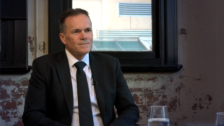Inflation more nuanced, so what’s the likely path for rate hikes?
The Reserve Bank of Australia officially joined the hiking party this month, and while the implications for Australian homeowners and businesses is important, it has little impact on the global economy. The likes of China, the US and Europe remain central to the long-term outlook for growth and also for the strength of both bond and equity markets.
Andreas Billmeier, European Economist at Western Asset, has been closely analysing the trajectory and implications of the change in monetary policy on the global economy. “Most central banks are in the process of reducing accommodation, but the need for an outright restrictive monetary stance is not clear as of yet” he explained in a recent update to investors.
Whilst almost every major developed market central bank has begun to hike “the evidence isn’t clear cut at this stage and that the path isn’t necessarily the same across major jurisdictions” he says highlighting the need for nuance when generalising the inflation threat. “Inflationary pressures are most acute in the US and somewhat more gradual but potentially longer-lasting in Europe”.
Billmeier offered insights into the complex world of neutral and equilibrium rates of interest, noting that in many cases the neutral real rate of interest, or the level at which policy is not stimulative, is likely around zero due to weakening demographics and lower trend economic growth. In a stark comparison to many he suggests that there is ‘no conclusive evidence that COVID-19 has interrupted this trend, let alone reversed it’, offering fodder to the lower for longer story.
In his view, a terminal nominal rate of 2 to 2.5 per cent is likely, however, actually monetary policy decisions have been more directed by responding to ‘shocks’ then focused on achieving these equilibrium or neutral rates.
Moving to policy decisions, there is some commonality across the developed world where inflation has been spurred by “common drivers including fiscal stimulus, energy inflation and supply-chain constraints”. That said, the “relative importance of these drivers has been quite varied across jurisdictions, with the US hit by goods inflation and Europe energy inflation.
There is positive news in both cases, however, as “supply-side disruptions should fade over time and demand will slow as household savings drop.” Similarly, “in continental Europe on the other hand, energy inflation (both household and transport fuels) still constitutes more than half of overall inflation. As energy prices cannot keep growing forever, that part of headline inflation will, sooner or later, slow substantially.”
Of particular concern to central bankers will be the fact the impact of policy changes on already weakening disposable income driven by high inflation and the reduction of fiscal support. “This alone already implies a rapid sequential slowdown in the second half of this year and into 2023” he explains.
In simple terms, the US Fed is expected to hike quickly before cutting again in 2024, and the ECB hike significantly more slowly. The result is that the “rate-hiking cycle currently priced by the market in the US is somewhat aggressive”. The ECB is likely to remain conservative for longer with the market pricing in little change.
” Finally, the Bank of England is more advanced by a quarter or two compared to its peers and it has already tapered the hawkish narrative as the first signs of demand weakness have arisen. In many ways, we believe that the UK will serve as a leading example: slowing demand based on a drop in real disposable income is not a unique characteristic of the UK—other major economies are just getting there a bit more slowly.”











